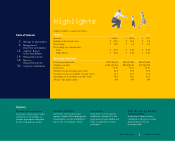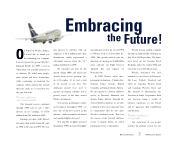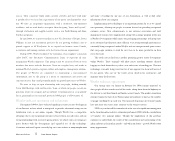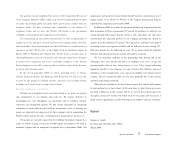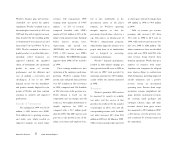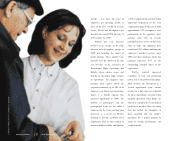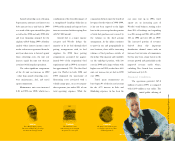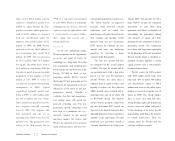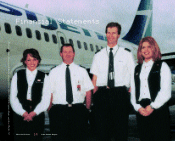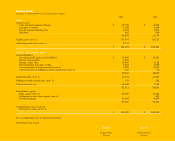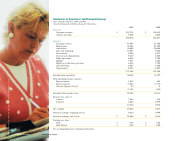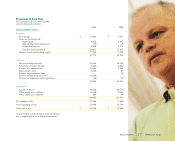Westjet 1999 Annual Report Download - page 10
Download and view the complete annual report
Please find page 10 of the 1999 Westjet annual report below. You can navigate through the pages in the report by either clicking on the pages listed below, or by using the keyword search tool below to find specific information within the annual report.8
WestJet’s business plan and low-fare,
controlled cost model for market
stimulation. WestJet’s available seats in
the marketplace increased by 40% over
1998 and that added capacity was more
than absorbed by the travelling public
as demonstrated by an increase in load
factor from 71.6% in 1998 to 72.3% in
1999. WestJet continued to deliver a
quality product at an affordable price,
including added frequency, an
improved schedule, the expanded
choice of destinations, the operational
quality in terms of on-time
performance, and the efficiency and
ease of making a reservation and
checking-in. A key to the 1999
financial success was the friendliness
and positive attitude displayed by the
people of WestJet and their constant
attention to creativity and improved
productivity.
Results of Operations
Net earnings for 1999 were $15.8
million, a 143% increase over 1998’s
$6.5 million due to growing revenues
and stable costs which resulted in
improved margins on much larger
revenues. The corporation’s 1999
earnings from operations of $30.5
million - or 15% of revenues -
compared favorably with 1998’s
margin of $13.1 million or 10% of the
airline’s total annual revenues. Earnings
before interest, income taxes,
depreciation, and aircraft rent
(EBITDAR) was $41.4 million in
1999, a 111% increase over 1998’s
$19.6 million. The EBITDAR margin
improved from 1998’s 15.6% to 20.3%
in 1999.
These earnings numbers are after
deduction of the employee profit share
provision. WestJet’s earnings before
income taxes and profit share provision
were $37.1 million or 18% of revenues
in 1999, compared with $14.8 million
or 12% of revenues in the previous year.
Profit sharing is based on the
corporation’s pre-tax margin and will
result in a $6.6 million distribution to
eligible employees for 1999 as
compared with a $1.7 million profit
share for 1998. This 288% increase is in
part due to the growth in size of the
airline, its revenues and employee base,
but is also attributable to the
incremental nature of the plan’s
formula. As WestJet’s operating
margins improve so does the
percentage of profit share, subject to a
cap. This plan is an integral part of
WestJet’s compensation program,
which further aligns the interests of its
people with those of its shareholders
and is designed to encourage
exceptional performance.
WestJet’s financial performance
resulted in fully diluted earnings per
share growth from 28 cents in 1998 to
58 cents in 1999. Cash provided by
operations amounted to $47.8 million,
exactly double the amount generated
in 1998.
Revenues
WestJet’s growth in 1999 can best
be measured by capacity or available
seat miles, and the success of that
growth is best reflected by the number
of passengers in those seats and the
corresponding revenue yield. Available
seat miles increased 40% from 893
million in 1998 to 1.25 billion in 1999,
while revenue passenger miles increased
at a faster pace, with a 41% change from
639 million in 1998 to 903 million
in 1999.
Yield or revenue per revenue
passenger mile increased 15% from
19.6 cents in 1998 to 22.5 cents in
1999, while total revenues increased by
62% over 1998 to $204 million. The
airline continues to focus on scheduled
service and as in 1998, with 95% of its
total revenue being derived from
domestic operations. WestJet also has a
number of contracts with major
Canadian tour companies for off-peak
hour charters flying to southwestern
USA destinations, providing improved
aircraft utilization and a positive
revenue stream on incremental
operating costs. Income from cargo
operations remains insignificant but
again, provides incremental revenues
for carrying small packages and
envelopes. Charter, cargo, and other
revenues derived from guest service
fees amounted to $9.9 million in 1999,
a 45% increase over the previous year,
and a consistent 5% of total revenues of
the corporation.
WestJet Airlines 1999 Annual Report



